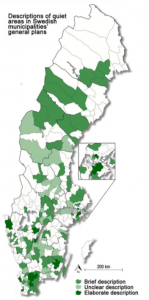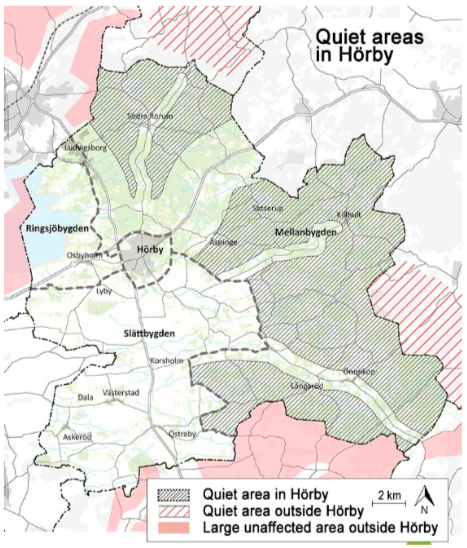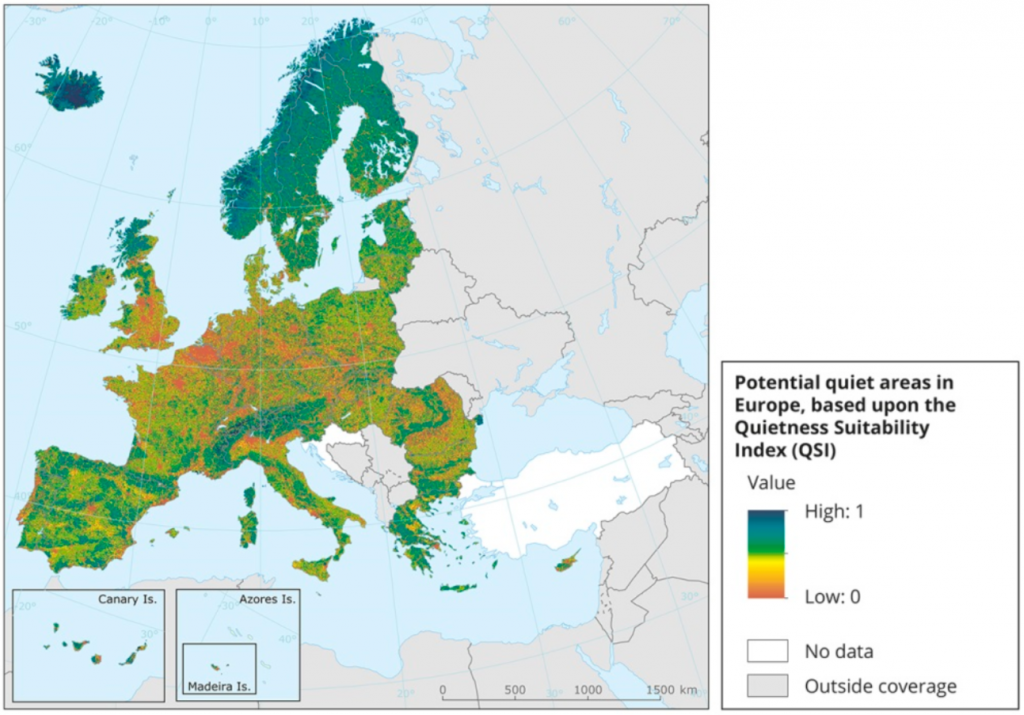Municipal and regional assessment of “quiet areas” in Sweden
Human impacts Comments Off on Municipal and regional assessment of “quiet areas” in Sweden A new paper from Sweden presents a compelling overview of efforts made by regions and municipalities in that country to identify areas that are relatively free of human noise. While these efforts have had only modest impact on planning and regulation, in a few cases quiet areas are being protected from noisy development or highlighted in recreational promotion. This sort of initiative deserves to be more widely replicated.
A new paper from Sweden presents a compelling overview of efforts made by regions and municipalities in that country to identify areas that are relatively free of human noise. While these efforts have had only modest impact on planning and regulation, in a few cases quiet areas are being protected from noisy development or highlighted in recreational promotion. This sort of initiative deserves to be more widely replicated.
Any local planners or activists who would like to encourage quiet-area expansion and protection will find a wealth of references here, and will appreciate the case reports describing some of the criteria being used in various cities, towns, and counties. The paper is open-access and can be readily downloaded as a PDF or html.
The authors found that 41% of Swedish municipalities include quiet areas in their general plans (all shades of green on map at left), but only 6% (dark green) have created detailed assessments or strategies for implementation.
Here’s an example of a map produced by the city of Hörby, where the local general plan “includes a detailed account of how the quiet areas are to be protected. For instance, wind farms, shooting ranges, sawmills, and similar activities are to be avoided.” Other towns have also aimed to concentrate noisy activities away from currently quieter areas.

The authors examined ten regional initiatives and forty-three municipal projects in some detail, including looking at the criteria used for classifying various degrees of “quiet area,” which generally ranged from very quiet rural settings (25-35dBA) to parks in urban areas with noise levels that were relatively modest compared to the surrounding neighborhoods (perhaps 45dBA, with varying standards for times above this level based on local context).
Since 2013, three municipalities have replicated a Stockholm initiative, a local “Guide to Silence,” the most active outreach thus far undertaken, which emphasizes accessibility and the publication of maps, guides, and signs at quiet locations. Relatedly, three coastal Swedish counties have pioneered “Consideration Areas,” where visitors are encouraged to minimize their noise in designated archipelagos, for example by slowing boats and avoiding noisy activities. While having no legal force, reports indicate that collaboration and common goodwill have made these efforts quite successful.
Still, the authors note that “in many cases where mapping of quiet areas had been performed, it has been used mainly as an inventory,” with little or no followup in the ten or fifteen years since the initial mapping. Clearly, there is much more than can be done to move these ideas forward and establish relative quiet as a resource that is worth protecting and expanding. This paper is a very useful starting point for learning more about the possibilities and potentials of quiet area planning.
As a final bit of inspiration, here’s a map of European “potential quiet areas,” which highlights the pressing need to identify and protect what quiet places remain, especially in and around developed areas. You can click on this map to view a larger version that gives a better sense of the many tiny pockets that deserve our attention ASAP; while the US, mapping by the National Park Service finds similarly tenuous pockets of quiet in federal, state, and local public lands that should be prioritized for protection.

